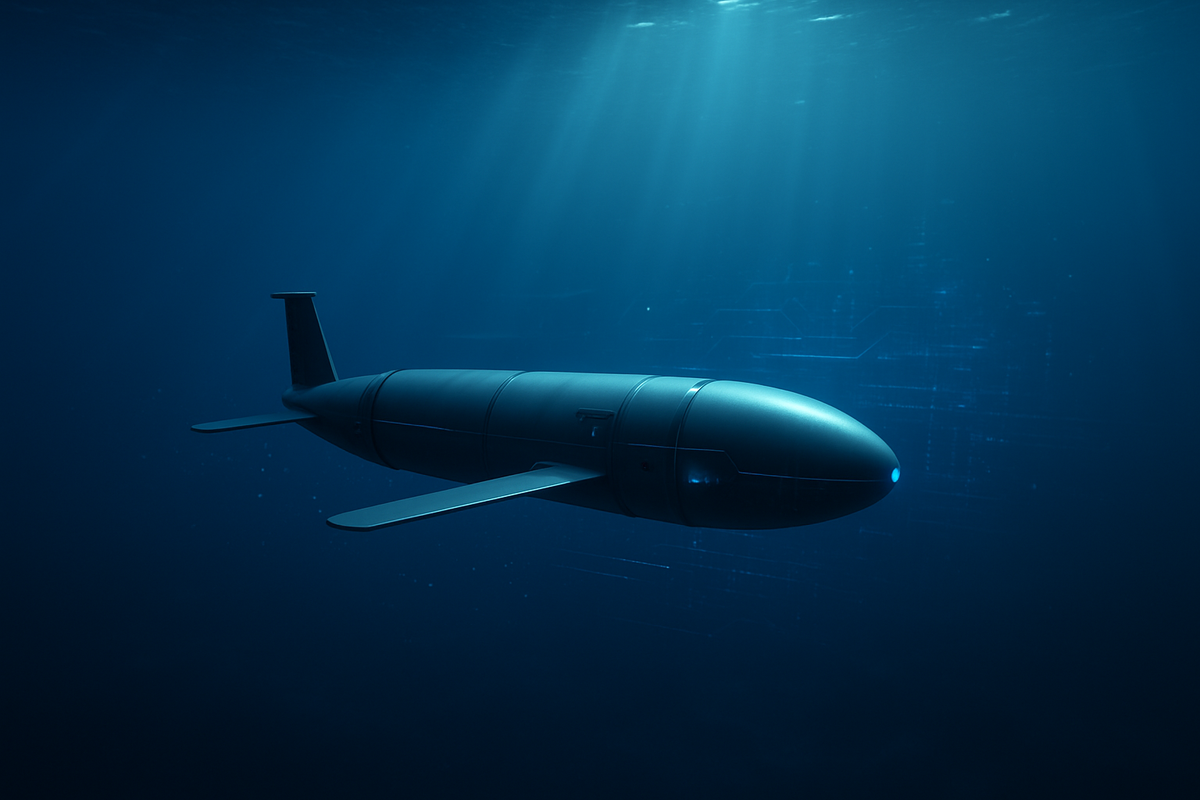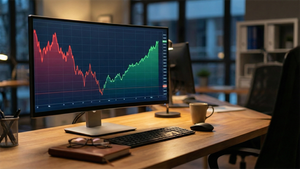
In a landmark achievement for marine science and technology, a collaborative effort between Teledyne Marine and Rutgers University-New Brunswick has launched an autonomous underwater glider on a historic mission to circumnavigate the globe. Dubbed "The Sentinel Mission," this unprecedented journey commenced today, October 10, 2025, with the deployment of the Teledyne Slocum Sentinel Glider, "Redwing," from the continental shelf south of Martha's Vineyard, Massachusetts. This ambitious endeavor marks a pivotal moment, promising to revolutionize our understanding of the world's oceans and usher in a new era of continuous, uncrewed ocean monitoring.
The immediate implications of this mission are profound. For the first time, a single autonomous vehicle will provide sustained, real-time data from vast, remote stretches of the global ocean over an anticipated five-year voyage. This continuous stream of information on ocean currents, temperature, salinity, and marine life will not only enhance weather and climate forecasting models but also provide critical insights for marine conservation and policy-making. The success of Redwing's 73,000-kilometer (45,000-mile) journey is set to validate the potential of long-endurance autonomous underwater vehicles (AUVs), paving the way for future fleets of gliders capable of even more sophisticated oceanographic research.
A New Era of Ocean Exploration Takes Flight
The "Redwing" glider, a highly advanced Teledyne Slocum Sentinel Glider, represents the pinnacle of commercial subsea glider technology. Its deployment today follows a significant send-off ceremony at the Woods Hole Oceanographic Institution (WHOI), marking the official start of its projected five-year odyssey. The glider's operational principle relies on subtle adjustments to its buoyancy, allowing it to execute a sawtooth-like trajectory through the water column. This energy-efficient method is crucial for its ultra-long endurance, enabling it to traverse immense distances with minimal power consumption, surfacing every 8-12 hours to transmit collected data via satellite.
This mission is a testament to years of development and collaboration between Teledyne Marine, a segment of Teledyne Technologies (NYSE: TDY), and the pioneering oceanographic researchers at Rutgers University-New Brunswick. Rutgers has been at the forefront of glider technology and ocean observing systems for decades, making them an ideal partner for such an ambitious undertaking. The specific details of Redwing's mission include continuous data collection on a wide array of oceanographic parameters. Beyond the fundamental measurements of temperature and salinity, the glider is equipped with a fish-tracking system, offering unprecedented insights into the migration patterns of tagged marine animals across open ocean environments. Over 50 undergraduate students from Rutgers are directly involved, gaining invaluable hands-on experience in mission planning, data analysis, and real-time monitoring, ensuring a lasting educational legacy for the project. The initial market and industry reactions are overwhelmingly positive, with marine technology sectors and scientific communities hailing it as a monumental step forward, anticipating a surge in demand for similar long-duration autonomous platforms and advanced sensor technologies.
Market Ripple Effects: Winners and Losers in the Blue Economy
The successful launch of the "Redwing" glider on its global circumnavigation mission is poised to create significant ripple effects across the "Blue Economy," impacting a range of companies and sectors. The most immediate beneficiary is Teledyne Technologies (NYSE: TDY), the parent company of Teledyne Marine. As the manufacturer of the advanced Slocum Sentinel Glider, Teledyne's reputation as a leader in autonomous underwater vehicle (AUV) technology will be significantly bolstered. The mission serves as a real-world, long-duration validation of their product's reliability, endurance, and data collection capabilities. This could translate into increased demand for their gliders and associated sensor payloads from research institutions, governmental agencies, and commercial entities involved in oceanography, defense, and offshore energy. The long-term success of Redwing will likely solidify Teledyne's market position, potentially leading to new contracts and partnerships.
Beyond Teledyne, other companies specializing in marine sensors, satellite communication systems, and data analytics platforms for oceanographic data stand to benefit. Firms developing advanced, low-power sensors for parameters like dissolved oxygen, pH, chlorophyll, and even acoustic monitoring will find new avenues for integration into next-generation gliders. Similarly, companies providing satellite communication services for data transmission from remote ocean locations will see increased usage. On the other hand, traditional methods of oceanographic data collection, such as costly and labor-intensive research vessel expeditions, might face increased scrutiny and potentially reduced funding for routine data acquisition. While research vessels will always be essential for certain tasks, the efficiency and cost-effectiveness of autonomous platforms like Redwing could shift investment priorities, posing a challenge for companies heavily invested solely in conventional marine survey operations. The educational component of the mission, involving Rutgers University, also highlights the growing importance of academic-industrial partnerships in driving innovation, potentially creating a competitive edge for universities with strong marine science and engineering programs.
Broader Significance: Charting a Course for Future Oceanography
The Sentinel Mission transcends a mere technological feat; it represents a profound shift in how humanity interacts with and understands its oceans. This event fits squarely into broader industry trends emphasizing autonomous systems, big data analytics, and sustained environmental monitoring. The ability of a single, uncrewed vehicle to collect continuous, high-resolution data across diverse ocean basins for years fundamentally alters the paradigm of oceanography. It moves from episodic, localized observations to a more holistic, long-term understanding of dynamic ocean processes, which is critical for addressing global challenges like climate change.
The potential ripple effects extend to competitors and partners alike. Other manufacturers of AUVs and gliders, such as Kongsberg Maritime or Liquid Robotics (a Boeing company), will undoubtedly intensify their R&D efforts to match or exceed the capabilities demonstrated by Teledyne's Slocum Sentinel. This competitive drive will accelerate innovation across the entire marine robotics sector. Furthermore, the sheer volume and quality of data collected by Redwing will fuel numerous scientific collaborations, benefiting climate modelers, marine biologists, and oceanographers globally. From a regulatory and policy perspective, the mission will provide invaluable data to inform international agreements on ocean health, fisheries management, and carbon sequestration strategies. Historically, the launch of early oceanographic satellites or the first deep-sea submersibles marked similar turning points, but Redwing’s mission distinguishes itself by offering persistent, in-situ observations that complement remote sensing and provide ground truth for models. It sets a new benchmark for what is achievable in autonomous ocean exploration and data acquisition.
What Comes Next: Navigating the Future of Ocean Intelligence
The success of the Sentinel Mission opens up a vista of both short-term and long-term possibilities for marine science and technology. In the short term, the immediate focus will be on the continuous monitoring and analysis of the data transmitted by Redwing. This real-time data will provide unprecedented insights into current oceanographic conditions, potentially leading to more accurate short-term weather forecasts, particularly for extreme events like hurricanes. Researchers will also be scrutinizing the glider's performance, energy consumption, and resilience in various ocean environments, which will directly inform the design of future autonomous platforms. The educational component will continue to grow, as students globally track Redwing's progress and engage with the scientific data it provides.
Looking further ahead, the long-term possibilities are transformative. The validated success of a global circumnavigation will undoubtedly spur the development of next-generation gliders capable of carrying even more sophisticated and energy-intensive sensor suites. This could include advanced biogeochemical sensors, acoustic arrays for marine mammal tracking, or even small deployable sampling devices. We could see the emergence of "glider fleets" – networks of autonomous vehicles working in concert to provide comprehensive, real-time ocean intelligence on a global scale. This will create new market opportunities for specialized sensor manufacturers, data integration platforms, and companies offering predictive analytics services based on this vast oceanographic dataset. Strategic pivots for existing marine technology companies may involve shifting R&D focus towards enhanced autonomy, AI-driven data processing at the edge, and robust, long-life power systems. Challenges will include managing the immense data streams, ensuring data security, and developing international protocols for autonomous vehicle operations in shared ocean spaces. Potential scenarios range from Redwing becoming the first of many such global missions, leading to a truly integrated global ocean observing system, to inspiring entirely new applications for persistent ocean presence, such as monitoring critical underwater infrastructure or aiding in disaster response.
Conclusion: A New Horizon for Ocean Stewardship
The launch of the "Redwing" glider on its world-first circumnavigation represents a monumental leap forward in marine science and technology. The key takeaway from this event is the demonstrated capability of autonomous underwater vehicles to provide sustained, high-resolution oceanographic data from the most remote corners of our planet. This mission is not merely a testament to engineering prowess but a critical enabler for a deeper, more continuous understanding of our oceans, which are vital to global climate, weather patterns, and biodiversity.
Moving forward, the market for autonomous marine systems is poised for significant growth, with Teledyne Technologies (NYSE: TDY) at the forefront. The success of the Sentinel Mission will likely accelerate investment in AUV research and development, fostering innovation across the entire marine technology sector. Investors should closely watch companies involved in marine robotics, advanced sensor development, satellite communication, and data analytics solutions tailored for oceanographic applications. The long-term implications for climate science, marine conservation, and even international policy are substantial, as decision-makers gain access to an unprecedented wealth of ocean data. This mission truly marks a new horizon for ocean stewardship, emphasizing the power of technology to connect us more intimately with the planet's most expansive and least understood environment.
This content is intended for informational purposes only and is not financial advice

















